Learn about the 5 types of wild cats that can be spotted in and around Michigan, their habitats, diets, and unique characteristics. Michigan, also known as the Great Lakes State, is home to a diverse range of wildlife. Among its many natural wonders, the presence of wild cats adds an air of mystery and intrigue to the state’s landscapes. From stealthy predators prowling through dense forests to elusive creatures silently observing their surroundings, Michigan harbors three captivating species of wild cats. Join us on a journey as we explore these feline wonders that roam the wilderness of Michigan.
5 Types of Wild Cats in Michigan
The Majestic Bobcat
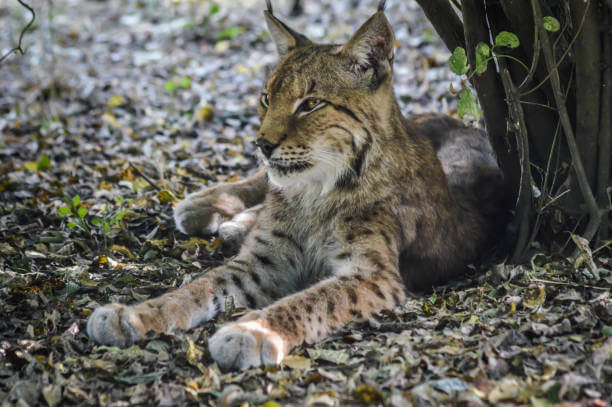
Habitat and Behavior
The bobcat (Lynx rufus) is an enchanting creature that can be found throughout Michigan’s forests and rural areas. With its distinctive short tail, tufted ears, and mesmerizing golden eyes, this medium-sized wild cat exudes both grace and power. While bobcats are typically elusive and solitary animals, sightings have increased in recent years due to effective conservation efforts.
Bobcats thrive in a variety of habitats, including deciduous forests, wetlands, and even suburban areas with ample cover. Their exceptional adaptability allows them to survive in diverse environments across Michigan. These skilled hunters primarily feed on small mammals such as rabbits and rodents but may also prey upon birds or deer when opportunities arise.
Conservation Status
In Michigan, bobcats are a protected species due to their historical decline in population caused by habitat loss and overhunting. However, thanks to successful conservation initiatives aimed at preserving their natural habitats and managing hunting practices responsibly, bobcat populations have shown signs of recovery in recent years.
The Elusive Lynx
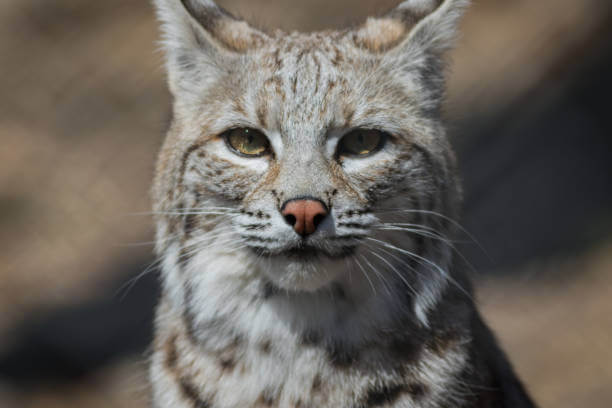
The lynx (Lynx canadensis) is a captivating species that inhabits remote regions of northern Michigan. Known for its striking appearance featuring long legs, prominent ear tufts, and thick fur adapted for harsh winters, the lynx is a true symbol of wilderness.
Habitat and Behavior
Lynx prefer dense coniferous forests with a mixture of open areas and thick understory vegetation. These solitary creatures are highly adapted to snowy environments, thanks to their large paws that act as natural snowshoes. Lynx primarily feed on snowshoe hares, which make up the majority of their diet.
Conservation Status
The lynx population in Michigan is relatively stable, but these elusive cats face ongoing threats due to habitat fragmentation and climate change. As such, efforts are underway to protect critical habitats and ensure the long-term survival of this iconic species within the state.
The Resilient Cougar
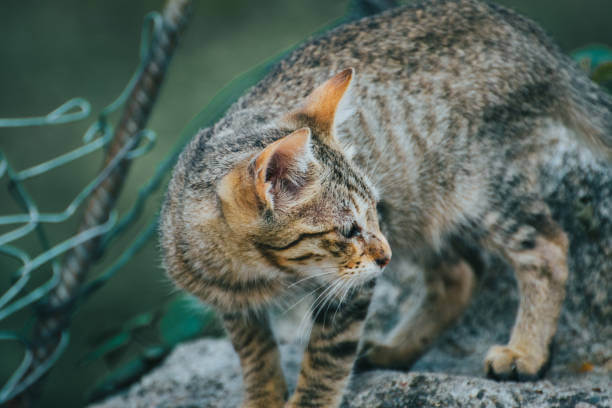
Also known as mountain lions or pumas, cougars (Puma concolor) were once native to Michigan but were extirpated from the region in the early 1900s due to excessive hunting and habitat loss. However, occasional sightings suggest that these magnificent creatures may still roam the vast forests of Michigan.
Potential Reintroduction
Efforts have been made in recent years to explore the possibility of reintroducing cougars into suitable habitats in Michigan. These initiatives aim to restore ecological balance and revive populations that once thrived in the state’s wilderness.
Importance of Coexistence
If cougars do make a comeback in Michigan, it is crucial for humans to learn how to coexist peacefully with these apex predators. Raising awareness about cougar behavior and implementing measures to minimize potential conflicts will be vital for both human safety and the conservation of these remarkable animals.
The Rare Canada Lynx
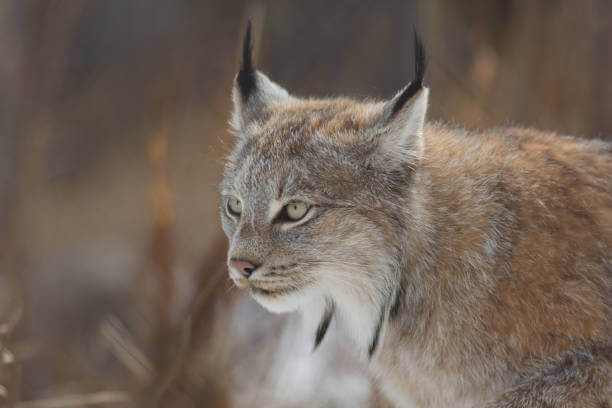
The Canada lynx (Lynx canadensis) is a small wild cat species closely related to the more common bobcat and lynx found in Michigan. While sightings of this elusive feline are rare, there have been occasional reports of Canada lynx in some areas of northern Michigan.
Habitat The Canada lynx is dependent on boreal forests for its habitat, which are characterized by dense stands of coniferous trees. Due to their specific habitat requirements and low population numbers, these cats have limited range and can be difficult to find in the wild.
Conservation Status
The Canada lynx has experienced significant population declines due to hunting and habitat loss over the years. As such, this species is currently listed as threatened under the Endangered Species Act in both Michigan and the United States as a whole.
The Graceful Blue Point Siamese Cat
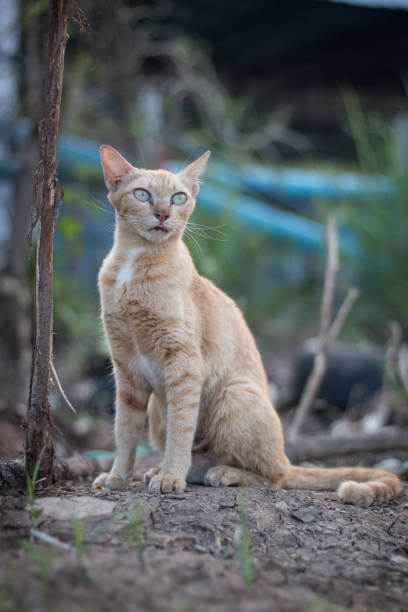
The Blue Point Siamese Cat (Felis catus) is a rare breed of domestic cat originating from Thailand. With its beautiful blue-gray fur and intriguing sapphire-colored eyes, the Blue Point Siamese is a distinctive and graceful creature.
History
The Blue Point Siamese cat has been around since the mid-1800s, when it was first bred in Thailand. It was later introduced to North America in the early 1900s and quickly became a popular breed due to its unique appearance.
The Blue Point Siamese has a slender body, medium-length fur, and a long tail. It is an intelligent breed that is known for its friendly and outgoing personality as well as its loyalty to its owners.
Popularity
The Blue Point Siamese cat remains one of the most beloved breeds today due to its charming appearance and endearing nature. This majestic breed continues to captivate cat lovers around the world with its grace and charisma.
A Fascinating Feline World in Michigan
Michigan is home to an incredible array of wild cats, from the graceful bobcat to the rare Canada lynx. Whether they roam the wilderness or curl up on a comfortable chair at home, these fascinating felines capture the imagination and captivate us with their beauty and grace. Michigan’s wild cats are a true treasure, and it is our responsibility to protect these majestic creatures for generations to come. By raising awareness about their importance, we can ensure that they will remain a vibrant part of Michigan’s natural heritage for years to come.
FAQS
Q: Is the Blue Point Siamese Cat recognized as a breed?
A: Yes, the Blue Point Siamese is officially recognized by The International Cat Association (TICA).
Q: What type of habitat do bobcats prefer?
A: Bobcats are highly adaptable and can be found in a variety of habitats such as forests, deserts, and even urban areas. They typically prefer dense vegetation as cover and access to fresh water sources.
Q: Can cougars be found in Michigan?
A: While cougars were extirpated from Michigan in the early 1900s due to hunting and habitat loss, recent sightings suggest that these magnificent cats may still roam the state’s wilderness. Efforts are underway to explore the possibility of reintroducing these apex predators into suitable habitats in Michigan.
Q: Are Canada lynx endangered?
A: Yes, the Canada lynx is listed as threatened under the Endangered Species Act in both Michigan and the United States as a whole due to hunting and habitat loss. Conservation efforts such as habitat protection and restoration are underway to ensure the long-term survival of this species.
Q: Are Blue Point Siamese Cats easy to take care of?
A: The Blue Point Siamese is an intelligent and friendly breed that is relatively easy to take care of. As long as they receive plenty of love and attention, these cats can make wonderful companions and bring joy to their owners.
Conclusion
Wild cats, such as the bobcat and cougar, and domestic breeds, such as the Blue Point Siamese Cat, are an important part of Michigan’s natural heritage. It is our responsibility to foster a society that values these animals and works towards their conservation for future generations. By raising awareness of their plight and implementing measures to minimize potential conflicts with humans, we can ensure that Michigan’s wild cats remain vibrant and healthy for many years to come.
